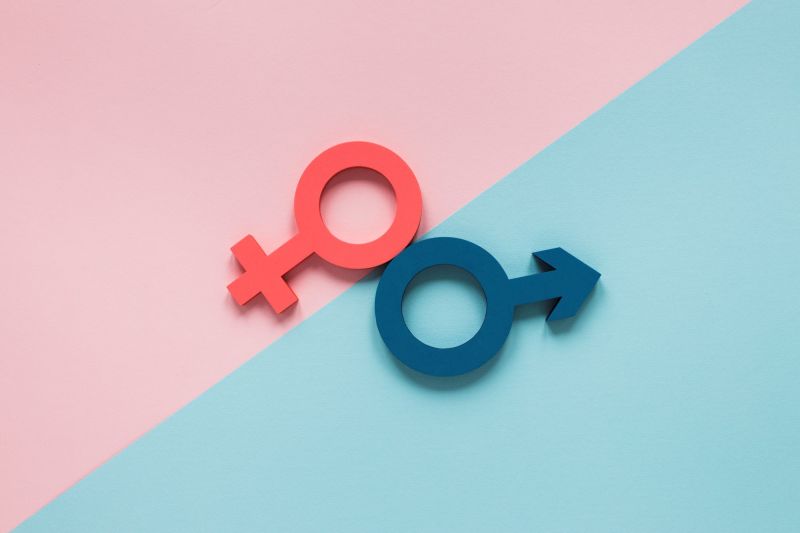Let’s Talk About The Orgasm Gap
When it comes to sex, orgasm isn’t everything. But it is something. A big something, that, for a variety of reasons, women experience far less than men during hetero sex. This phenomenon is called the orgasm gap.
What is the orgasm gap all about? What are the reasons behind it? And, crucially, what can we do about it?

What is the orgasm gap?
The gender orgasm gap, also called the pleasure gap or orgasm inequality, refers to the social phenomenon of women, or vulva-owners, having significantly fewer orgasms than men during hetero sex encounters.
Even though you don’t have to climax to have great sex, orgasms are still a big part of sexual satisfaction. Repeatedly not reaching orgasm during sex while your partner enjoys their happy ending is not fun. Straight women are the least sexually satisfied demographic.
Studies repeatedly show that hetero women have the least orgasms during sex
A study of over 50,000 people asked men and women to estimate the percentage of time they had an orgasm during sex in the previous month. Men estimated they came 95% of the time and women only 65% of the time.
Another study by sex company Durex found that 20% of women never or only rarely orgasmed during sex, compared with just 2% of men.
Hetero women also have fewer orgasms than queer women
What is the orgasm gap? It’s not all about male vs female orgasm.
Straight women or vulva owners orgasm less than women who sleep with mixed genders. Interestingly, such a difference does not exist between hetero men, gay men, or men who sleep with mixed genders.

The study of over 50,000 people also asked people of different sexual orientations to estimate the percentage of time they orgasmed during sex in the last month. The results showed that gay men orgasm 89%, gay women, 86%, bisexual men 88%, and bisexual women 66% of the time.
Surveys have also found that hetero women or people with vulvas have far fewer orgasms with a partner than when masturbating, and that the orgasm gap is a lot bigger during casual sex encounters than between people in relationships.
It's important to note that trans and gender non-conforming folk have not been included in these statistics only because there is not yet enough data on this topic for these communities.
The perception gap
Something that contributes to the male vs female orgasm gap is the perception gap. This term refers to the gap between how many orgasms hetero men think women are having, and how many they are actually having.
A study by the National Survey of Sexual Health found that 85% of men said their sexual partner had climaxed during their most recent sexual encounter. In contrast, just 64% of women said they had climaxed during their most recent sexual encounter.
Why the difference? There are many factors, including over-inflated egos, misreading signals, and faking the big O.

Why does the orgasm gap exist?
The male vs female orgasm or pleasure gap isn’t just a penis problem or a vulva problem. There’s no point blaming any particular demographic. If you’re still wondering, what is the orgasm gap and where does it come from, know this: it’s a phenomenon that is part of wider cultural and social issues.
A lack of sex education
The sex education we get in school is minimal, to say the least. On top of this, many people don’t talk openly about sex and learn about it through the most available channel: porn.
This means we don’t know enough about female pleasure and are bad at communicating during and about sex. Many of us are too shy to ask Is this working for you? or say when something does or doesn’t feel good.
Misunderstanding female sexual anatomy
This is a major factor in the orgasm gap and is linked to poor sex education.
Did you know that most people (including vulva-owners) can’t accurately label a diagram of the vulva? And that people still mistakenly call the vulva (the external part of the female sex organs) the vagina?

This mislabelling purports the idea that the vagina, which is the canal that connects the uterus to the outside world and where penetration happens, is the only important female sex organ.
Not only is this not true, but it has a major impact on female pleasure. Why? Because more than 75% of women need more than vaginal penetration to reach orgasm. In other words, the majority of women cannot and do not orgasm from penetration alone.
A lack of education around female sexual pleasure has resulted in many people, women included, simply not knowing what it really takes to reach climax.
We live in a penis-centered society
Put simply, we care more when men orgasm. One reason for this is that reproduction requires the man, not the woman, to orgasm. Sadly, we still haven’t moved past this mindset, so female orgasm is still valued less.
Porn is completely unrealistic
Not only is most porn penis-focussed, but it, alongside most other fictional sex scenes, centers around P in V penetration and doesn’t accurately show what it takes to make most women orgasm.

The female orgasm takes longer and is more complex
So, what does it take to make a woman orgasm? Firstly, on average it takes women longer to orgasm than men during hetero sex. For most women, it also takes mental concentration and relaxation, sufficient arousal time, foreplay, and clitoral stimulation.
Men don’t know what to do, and women don’t know how to tell them
A lack of communication around sex has a big impact on female pleasure and the male vs female orgasm gap. Many women don’t tell their partners how to make them orgasm. They fall into a pattern of faking it and having less satisfying sex rather than speaking up.
Why is this so common? There are many reasons, including personal shame, not seeing their own pleasure as important, not wanting to criticize their partner, or not knowing what to say.
What you can do about the male vs female orgasm gap
Learn about sexual anatomy
This means taking a mirror and going down there, but also going on the internet and really looking at where everything is and what everything does. Especially the clitoris!

Masturbate and explore your body
Masturbation has loads of benefits. A big one is that it lets you discover what works for you and what makes you orgasm, so you can take charge of your pleasure.
Ask for what you want!
Once you know what you like, it’s time to practice asking for it: “It feels really good when you…” and “I would love it if you…”, or even just “A little to the left…”. Your partner will be happy to learn how they can get you off, trust us.
Promote sex-positivity
Practice sex positivity by talking openly about sex, desires, and bodies. The more we do this, the more we can all communicate, learn from each other, and feel pleasure.
Work on confidence and mindfulness
Something that regularly stops women from reaching climax is an inability to relax during sex. This can be due to shame, self-consciousness, orgasm anxiety, or not feeling comfortable with a partner.
It’s impossible for most women to climax while their mind is elsewhere. Practice being in the moment and accepting yourself as a sexual (and sexy) being.

What is the orgasm gap? Something we have to work together to close!
And it’s important because women deserve pleasure, too! But also because closing this gap is a step towards greater equality, sexual satisfaction, communication, better relationships, and overall wellbeing.
That sounds good to us!









